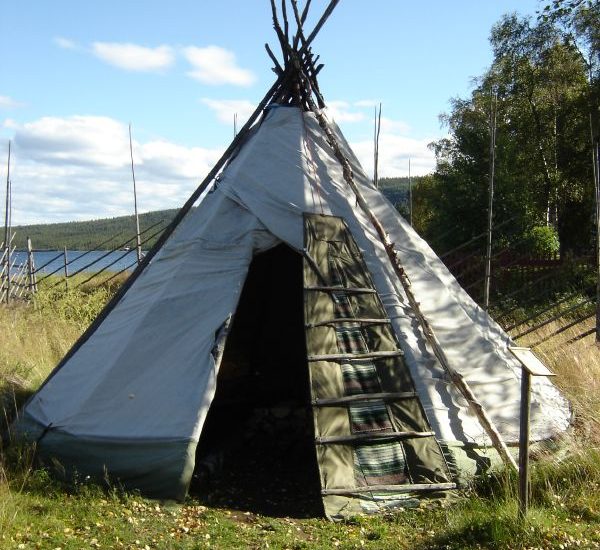LÁVVU – SAMI TIPI/TEEPEE NOW AND BEFORE

 You are Reading..
You are Reading..
LÁVVU – SAMI TIPI/TEEPEE NOW AND BEFORE
The lávvu/ lávvo is a traditional sami dwelling. It is also used around the globe throughout Russia and North America. You could call it a Sami tipi.
The lávvu, goahti and dárfegoahti (peat hut) are the original traditional sami dwellings. To generalize it – the lávvus where mainly used by the reindeer-heading samis, and darfegoahti was mainly used by sea-samis or samis living inland on hunting and fishing.
Jungles father lived in a time of big transition and change in sami lifestyle. He was born and raised living in a lávvu until he was 15, until they got a house in the 1950s. The house was used mainly in spring and fall. Summer and winter they spent in a lávvu elsewhere due to the reindeer migration.
In the 1950s the Swedish government decided that everyone should have a house. The law said that everyone had a right to humanly decent living conditions. And a lávvu was not considered to be that. So every family received a house. The same happened in Norway and Finland. The next thing that happened was the arrival of the snowmobile in the middle of the sixties. This revolutionized the reindeer-herding, and had the biggest impact on the reduced use of lávvu. It was no longer necessary to live in immediate connection to the reindeers at all times. It started to become and more possible to live in houses, for example by having one in the summer area and one in the winter area. The snowmobile made it possible to cover long distances in short time.
Construction of the lávvu
The Lávvu usually consists of 3 forked poles, and many straight poles leaned to the top. It can be covered by any soft material. In the very old days either animal skin or birchbark was used as cover. Later wool became more common, and today canvas is most commonly used in Sápmi. The floorspace is the ground covered with branches (preferably birch). This construction allows for a designated fireplace in the middle, since there is a hole on the top for the smoke to get out.
Once you have the poles and the cover it is very fast to put up and take down. That is why lávvus are great dwellings when following the reindeer herds and it is necessary to move camp often.
The poles where usually transported during the migrations to save time, not having to make new ones.
If the lávvu is used regurarly on the same spot, for example for hunting, then the poles are left for next time and only the cover is taken down.
The kitchen in the lávvu is on the opposite side of the entrance – on the other side of the fireplace. This is where the food and utensils are kept, because it is the most hygienic place -furthest away from the entrance, and protected by the fire. No one sits in this area – no dogs either. It was considered holy, where the goddess Juoksáhkká had her dwelling, and the shaman drum was kept. This is a area that you should never go across. If you want to go to the other side of the fire, you have to go towards the entrance first to get there.
It is common to have a chain hanging from the top of the lávvu for hooking up a pot over the fire.
The entrance is marked with two logs on each side. There are no branches on the entrance ground. Traditionally all guest should sit on the logs until they are invited inside the lávvu. This practice is not very common anymore.
Firewood and dogs have their place close to the entrance.
Use of lávvu today
Lávvu is still used today as a temporary dwelling during migrations with the reindeers, on hunting and fishing trips, for smoking meat or just a alternative to a tent when camping. The advantage of the lávvu over a tent is that there is a fireplace inside.
A difference between a tipi and a lávvu can be seen on the way the door is built.
